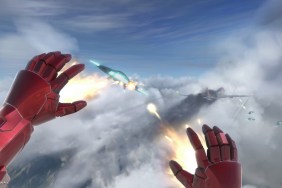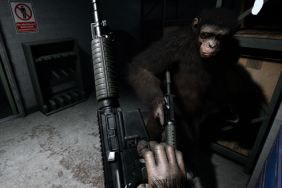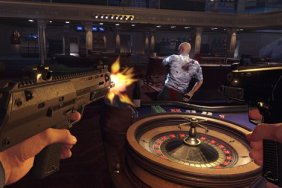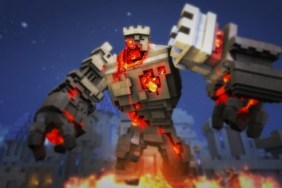Standing there waiting to use Sony’s recently announced VR headset Project Morpheus at GDC’14, it was difficult to not wonder just how otherworldly the experience was going to be, especially given all the hype surrounding it. Then, once the headset was adjusted to fit my head and a pair of cheap headphones were placed on top of it, the experience became both a reminder of why the technology has been the holy grail for gaming and why it has failed to take off so many times in the past.
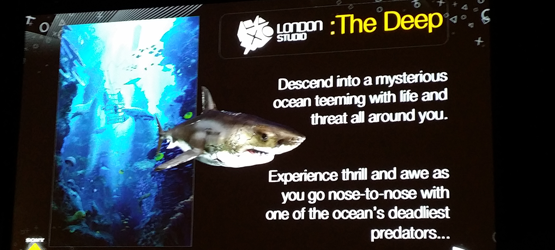
The Deep is a short first person experience, where the player is in a shark cage being lowered into the depths of the ocean, until they are attacked by a shark. Unable to move, the only action available was to look around and shoot a flare gun with your one posable arm. Contorting my wrist in various directions with a DualShock 4 in hand, I was surprised how well it could track my awkward movements. But, besides it following my random gestures, the arm attached to the virtual body always felt tethered to a mannequin and unnatural, as the torso was frozen in place.
Initially the unit seemed to track my movements well enough, but when I tested its limits by seeing what would happen if I passed my arm through my virtual abdomen, things fell apart. With its collision detection not allowing the arm to pass, the demonstration was completely out of sync. Even though the movements were understandably never really one-to-one due to my lengthy arms, it was now completely off and needed to be recalibrated, which thankfully was done at just the press of a button.
As would be hoped, the head tracking for Project Morpheus was quick and accurate, even when doing some odd head movements. The only real issue seems to stem from the characters inability to move more than his head and arm, as looking behind you or turning around would simply recreate a scene from The Exorcist – which allowed you to see your own back.
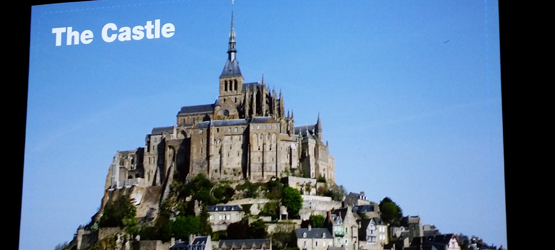
The next demo was The Castle – a first person game that, while also not allowing any movement, it had stepped away from The Deep‘s attached limb, instead using two floating gauntlets controlled by two PlayStation Move controllers. Even though the premise was little more than attacking a training dummy, it was by far more interesting and better of a representation of what VR can do. Standing there with two swords planted in the ground on either side of you, it was possible to pull them out by moving the wand to the grip and pressing the trigger button. But, due to my height, the swords were out of reach and required me to kneel down to pick them up, something that shorter users didn’t have to do. This simple construct was the first defining moment of my experience with Sony’s Project Morpheus, as the boundary between the virtual space and the real one became blurred for the first time.
Using one gauntlet to slice off a limb of the training dummy and the other to hold it in place, there was just a great sense of reality as everything combined with your depth perception to give mass the digital object, as if it was actually in front of you. Other players had held on to the dummy’s arm, sliced it off and then used it to beat the dummy before throwing it across The Castle‘s courtyard. The experience felt organic and beyond the constraints of what is currently possible with an analog stick and buttons, showing that VR really can be a massive leap forward.
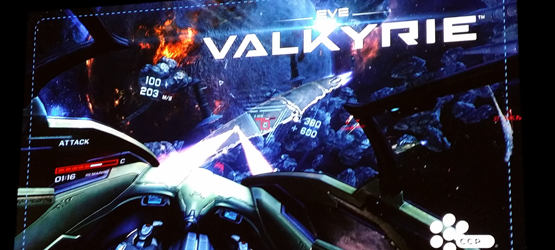
The next day, we were given time to play a 2-on-2 demonstration of EVE: Valkyrie, a first person dogfighting shooter based in the world of EVE Online. Within seconds of being clicked into Project Morpheus, the immediate effect of being in the cockpit was mind blowing and incredibly satisfying. While the visuals were not the most detailed, and the resolution of the headset not perfect, it was by far and away the best looking of the three demos.
Once all of the fighters are hooked up and ready, your craft is launched through an ejection tube, giving such a sensory overload that it was difficult to not physically lean back into your chair at the sensation. Then, once you are free, you are floating in space and looking around in all directions for enemy crafts. Once finding a direction to go, hitting the thrusters propelled you through space, the front of the ship was where your machine guns would fire, and your head was where you could target for missile lock – everything was natural and immediately accessible. Flying towards a giant space ship, hitting the air-brake and being able to swing around in a 360 degree field of battle, all while bullets are flying by and other planes were being taken out wasn’t simply the best experience I had at the show, it was the best experience this year.
Ultimately, getting to use Sony’s Project Morpheus was bittersweet, as even though it was obviously built with some great possibilities in mind, it became clear that much like anything in the games industry, it will live and die by its software. Thankfully, if we look at how Sony has handled the development of their peripherals, by the time their VR unit hits store shelves, many of us will already have what we need to maximize our experience.





